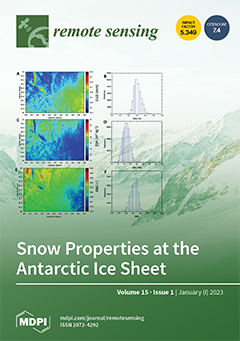Background: Desertification is one of the main obstacles to global sustainable development. Monitoring, evaluating and mastering its driving factors are very important for the prevention and control of desertification. As one of the largest deserts in China, the development of desertification in Otindag
[...] Read more.
Background: Desertification is one of the main obstacles to global sustainable development. Monitoring, evaluating and mastering its driving factors are very important for the prevention and control of desertification. As one of the largest deserts in China, the development of desertification in Otindag Sandy Land (OSL) resulted in the reduction in land productivity and serious ecological/environmental consequences. Although many ecological restoration projects have been carried out, the vegetation restoration of OSL and the impact mechanism of climate and human activities on desertification remain unclear.
Methods: Taking OSL as the research area, this paper constructs the desertification index by using the remote sensing images and meteorological and socio-economic data, between 1986 and 2016, and analyzes the spatio-temporal evolution process and driving factors of desertification by using trend analysis and spearman rank correlation.
Results: The results showed that: (1) Desertification in the OSL has fluctuated greatly during the past 30 years. Desertification recovered between 1986 and 1990, expanded and increased between 1990 and 2000, reduced between 2000 and 2004, developed rapidly between 2004 and 2007, and recovered again between 2007 and 2016; (2) The desertification of OSL is dominated by a non-significant change trend, accounting for 73.27%. In the significant change trend, the area of desertification rising trend is 20.32%, which is mainly located in the north and east, and the area of declining trend is 6.41%, which is mainly located in the southwest; (3) Desertification is the result of the superposition of climate and human activities. Climate change is the main influencing factor, followed by human activities, and the superposition effects of the two are spatio-temporal differences.
Conclusions: These results shed light on the development of desertification in OSL and the relative importance and complex interrelationship between human activities and climate in regulating the process of desertification. Based on this, we suggest continuing to implement the ecological restoration policy and avoid the destruction of vegetation by large-scale animal husbandry in order to improve the situation of desertification.
Full article





